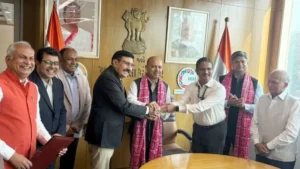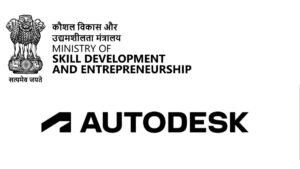Bharat Petroleum Corporation (BPCL), one of India’s leading petroleum companies, has recently announced its partnership with Olympic and World Javelin Champion Neeraj Chopra. Neeraj Chopra will serve as the brand ambassador for BPCL’s premium petrol variant, ‘Speed.’ This collaboration adds to BPCL’s list of esteemed brand ambassadors.
Previously, the company had partnered with cricketer Rahul Dravid for its ‘Pure for Sure’ initiative and range of ‘MAK lubricants’.
The Promise of ‘Speed’
- Introduction of Speed petrol: G. Krishnakumar, Chairman and Managing Director of BPCL, described Speed as a high-performance petrol embodying peak performance and the thrill of staying ahead consistently.
- Technological features: The integration of advanced technology into ‘Speed’ is emphasized, particularly showcasing the bespoke friction modifier technology. This innovation guarantees enhanced driving experiences, improved fuel efficiency, and peak engine performance.
- Benefits of Multi-Function Additives (MFA): Speed is blended with world-class MFA, which effectively controls harmful deposits in all fuel metering systems and components such as fuel injectors, carburetors, intake valves/ports, and combustion chambers. This leads to enhanced engine performance and up to 2% fuel economy benefits.
- Prevention of emissions and Octane Requirement Increase (ORI): Uncontrolled emissions and ORI can occur with low-quality fuel. Speed’s MFA technology washes away harmful debris, prevents further debris formation, and reduces emissions. This not only increases the engine’s lifespan but also promotes sustainability by lowering emissions.
- Engine protection: Speed’s technology aims to address engine problems caused by low-quality fuel by providing comprehensive care for all engine components. It prevents rust, corrosion, and provides overall protection, thereby reducing maintenance costs and extending the engine’s lifespan.
About Bharat Petroleum Corporation Limited (BPCL)
Bharat Petroleum Corporation Limited (BPCL) is an Indian state-owned enterprise (PSU) that falls under the jurisdiction of the Ministry of Petroleum and Natural Gas, Government of India. With refineries located in Bina, Kochi, and Mumbai, BPCL stands as the second-largest downstream oil producer owned by the government of India.
Sukhmal Jain on the Synergy of Sports and Performance
Sukhmal Jain, BPCL’s Director of Marketing, emphasized the role of sports as a driving force for inspiration and unity, aligning seamlessly with Neeraj Chopra’s ethos of triumph and pursuit of excellence, as well as the characteristics embodied by ‘Speed’ petrol. With Neeraj Chopra’s winning mindset and BPCL’s dedication to excellence, this partnership is positioned to motivate customers to reach unprecedented levels of performance and efficiency on their journeys.




 RELOS Agreement and India–Russia Relatio...
RELOS Agreement and India–Russia Relatio...
 Banas Dairy & BBSSL Join Forces to B...
Banas Dairy & BBSSL Join Forces to B...
 MSDE & Autodesk Team Up to Revolutio...
MSDE & Autodesk Team Up to Revolutio...







